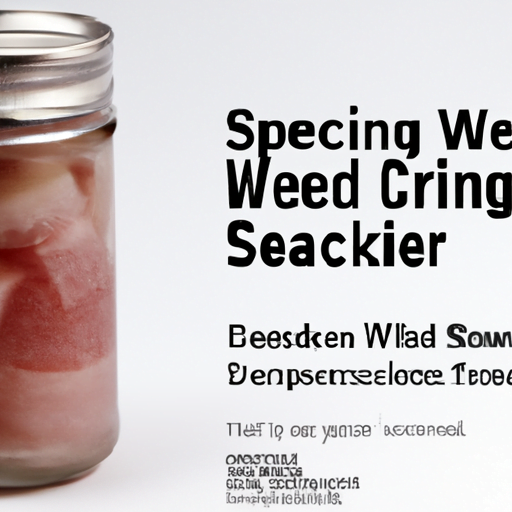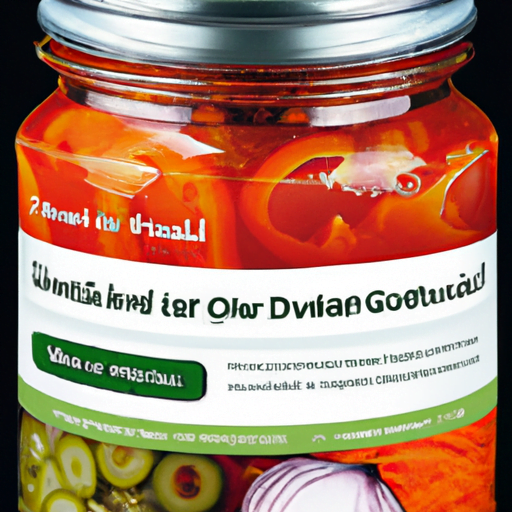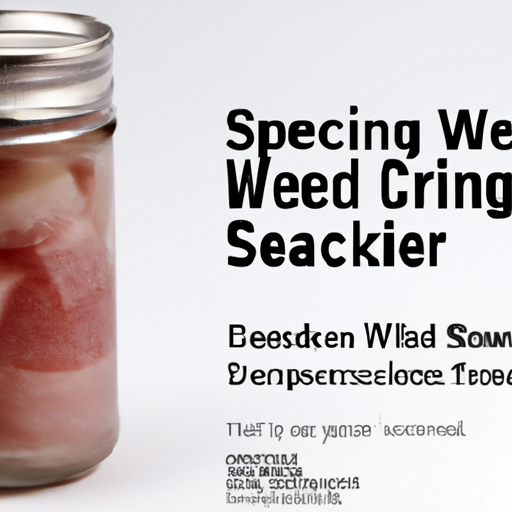So, have you ever wondered how long you can actually hold cold food without refrigeration? I mean, we’ve all been there, right? Maybe you’re going camping or maybe there’s a power outage and your fridge is out of commission. Whatever the reason, it’s good to know how long your food will last in these situations. Well, I’ve got some interesting news for you. There’s actually a whole science behind food preservation and I’m about to break it down for you.
You see, the key to storing cold food without refrigeration lies in temperature control and preventing the growth of bacteria. When it comes to perishable items like meat, dairy, and prepared meals, they can start to spoil pretty quickly if not stored properly. But fear not, there are ways to keep your food safe and delicious without the need for a fridge.
In an upcoming article, we’ll dive deep into the different methods of food preservation, from canning to curing, and everything in between. We’ll explore the science behind these methods and how they work to keep your food fresh and safe to eat. So, if you’re interested in learning some handy tricks to store cold food without refrigeration, stay tuned. Trust me, you won’t want to miss out on this fascinating topic!

Introduction
Off grid living has gained popularity in recent years, as people look for ways to live self-sufficiently and reduce their reliance on modern conveniences. One of the key challenges of off grid living is preserving food without access to refrigeration. In this article, we will explore the science behind food preservation and uncover various methods to store cold food without the use of a refrigerator.
Off grid living and the importance of food preservation
When living off the grid, the availability of fresh food can be limited. Therefore, it becomes crucial to preserve food for longer durations to ensure a constant supply of nourishment. Food preservation not only extends the shelf life of perishable items but also helps maintain the nutritional value and taste of the food.
Factors affecting food preservation
To understand how to store cold food without refrigeration, it is important to first understand the factors that impact food preservation. Two primary factors that contribute to food spoilage are temperature and microorganisms.
Temperature and its impact on food spoilage
Temperature plays a significant role in the rate at which food spoils. High temperatures accelerate microbial growth, enzymatic reactions, and chemical deterioration, leading to faster food decay. Conversely, low temperatures can slow down the spoilage process by inhibiting microbial growth and enzyme activity.
Microorganisms and their role in food decay
Microorganisms such as bacteria, yeast, and molds are present in our environment and can cause food spoilage. They break down organic matter, resulting in unpleasant odors, colors, and textures. Proper understanding and management of microorganisms are crucial for effective food preservation.
Traditional methods of food preservation
Before the advent of refrigeration, our ancestors relied on various techniques to preserve their food for extended periods. These traditional methods are still widely used today, even in off grid living scenarios.
Canning and bottling as a means of long-term storage
Canning and bottling involve sealing food in airtight containers to prevent the entry of microorganisms. The process involves heating the food to kill any existing bacteria and creating a vacuum seal that keeps the food preserved for long periods. It is important to use proper canning techniques to ensure the safety and quality of the preserved food.
Drying and dehydrating food for preservation
Drying and dehydrating are age-old methods of removing moisture from food, making it less prone to spoilage. By reducing the water content, microorganisms are unable to thrive, thereby preserving the food. This method is particularly effective for fruits, vegetables, and herbs. Dehydrated food can be rehydrated before consumption, making it a convenient option for off grid living.

Understanding cold storage
Cold storage is the key to preserving freshness and maintaining the quality of perishable food items. While refrigerators are commonly used for this purpose, off grid living requires alternative methods of cold food storage.
The concept of cold storage and its benefits
Cold storage involves keeping food at low temperatures to slow down the spoilage process. It helps maintain the organoleptic properties of food (such as taste, color, and texture) and inhibits microbial growth. Cold storage also extends the shelf life of perishable items, allowing you to store them for a longer duration.
Different types of cold storage techniques
In off grid living scenarios, it is important to explore alternative methods of cold food storage. Natural insulation is one such technique that utilizes the insulating properties of materials like straw, sawdust, or even snow to keep food cool. These materials can be used to create makeshift coolers or storage areas to maintain low temperatures.
Another effective method is using underground cellars or root cellars. The naturally cool and stable temperatures underground help preserve food by providing a consistently low temperature environment. These cellars can be used to store root vegetables, fruits, and even dairy products.
Alternative methods of cold food storage
Apart from natural insulation and underground cellars, there are several other alternative methods of cold food storage that can be employed in off grid living situations.
Natural insulation and its role in keeping food cold
As mentioned earlier, natural insulation materials like straw, sawdust, or even blankets can help maintain low temperatures for food storage. By insulating the storage area, these materials minimize heat transfer and prevent temperature fluctuations, ensuring a colder environment for the food.
Using underground cellars for food storage
Underground cellars or root cellars are excellent options for cold food storage without refrigeration. By utilizing the earth’s natural cooling properties, these cellars provide a cool and damp environment that helps preserve food for longer periods. The consistent low temperatures and high humidity inhibit microbial growth and slow down the spoilage process.
Using chemical reactions for food preservation
Chemical reactions can also be employed to inhibit food spoilage and extend the shelf life of perishable items. Certain chemical agents have antimicrobial properties that can prevent bacterial growth and deterioration of food.
Chemical agents and their ability to inhibit food spoilage
Chemical agents like salt, sugar, and vinegar have been used for centuries as preservatives due to their ability to inhibit microbial growth. Salt acts by dehydrating microorganisms, while sugar creates an environment of high osmotic pressure that makes it difficult for bacteria to survive. Vinegar, with its acidic nature, prevents bacterial growth and helps preserve food.
The use of antioxidants in food preservation
Antioxidants are compounds that prevent or delay the deterioration of food caused by oxidation, which can lead to rancidity and spoilage. Natural antioxidants like vitamin E, vitamin C, and plant extracts have been used in food preservation to maintain the quality and stability of the stored food.
Exploring natural preservatives
In addition to chemical agents, natural preservatives can also be used to extend the shelf life of food while staying off the grid.
Salt and its role in preventing food decay
Salt has been used as a natural preservative for centuries. It works by drawing out moisture from food, creating an environment where bacteria cannot thrive. Salt is particularly effective for preserving meat and fish, as its high osmotic nature inhibits microbial growth and extends the shelf life of these perishable items.
Fermentation as a natural food preservation technique
Fermentation is a natural process that relies on the activity of beneficial microorganisms to preserve food. It involves converting sugars and carbohydrates into alcohol, organic acids, or gases. This process not only preserves the food but also enhances its flavor, texture, and nutritional value. Fermented foods such as sauerkraut, kimchi, and yogurt are popular examples of this preservation technique.
Other innovative approaches to food preservation
In addition to the traditional and natural methods discussed, there are several innovative approaches to food preservation that can be employed in off grid living situations.
Vacuum sealing as a method to extend food shelf life
Vacuum sealing involves removing air from the packaging of food items, creating a vacuum environment that inhibits microbial growth and slows down the spoilage process. This method is particularly effective for preserving meat, fish, and other perishable items. By removing the oxygen, vacuum sealing helps maintain the quality and freshness of the food for extended periods.
Using advanced packaging materials for long-term preservation
Advances in technology have led to the development of specialized packaging materials that can extend the shelf life of food without refrigeration. These materials incorporate antimicrobial properties, oxygen barriers, and moisture-control features to maintain the quality and freshness of the stored food.
Maintaining food safety during storage
While employing various food preservation techniques, it is crucial to prioritize food safety to prevent any potential health risks.
Proper hygiene practices to prevent food contamination
Maintaining proper hygiene practices during food storage is essential to prevent contamination and the growth of harmful bacteria. This includes regularly washing hands, using clean utensils, and ensuring the storage area is clean and free from pests.
Monitoring and controlling temperature to avoid bacterial growth
Consistently monitoring and controlling the temperature of the storage area is vital to avoid bacterial growth and food spoilage. It is recommended to use a thermometer to ensure the cold storage is maintained within the ideal temperature range for the specific food items being preserved.
Conclusion
In conclusion, preserving food without the use of refrigeration is not only possible but also essential for off grid living. Understanding the factors affecting food preservation, exploring traditional and alternative methods of cold storage, and utilizing chemical reactions and natural preservatives can help extend the shelf life of perishable items. By preserving food effectively, you can ensure a constant supply of nourishment and enjoy the benefits of off grid living without compromising on the quality and safety of the food you consume.





